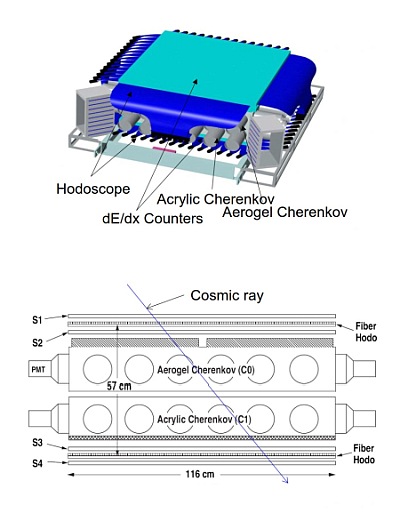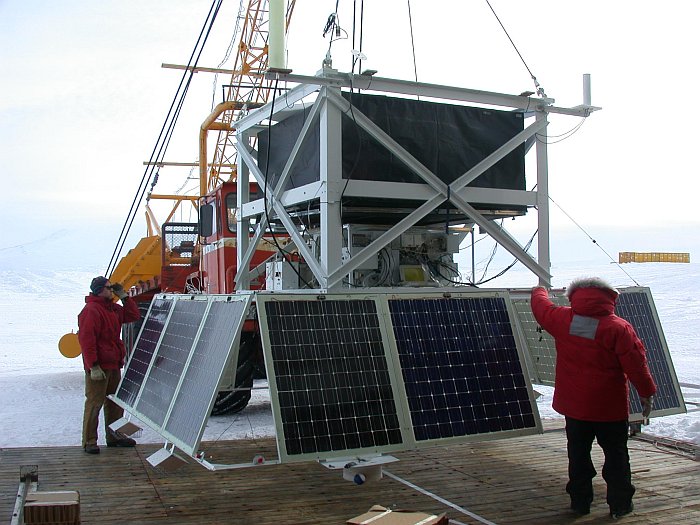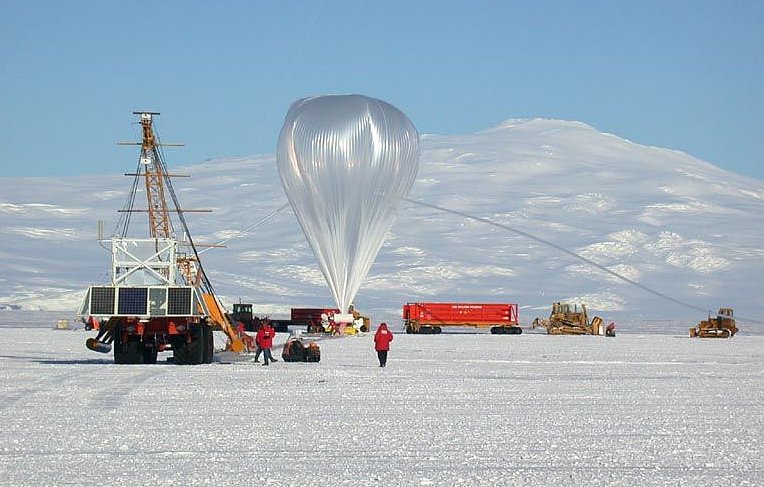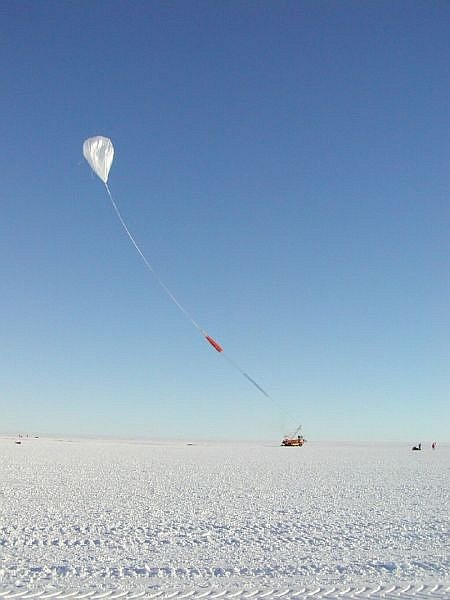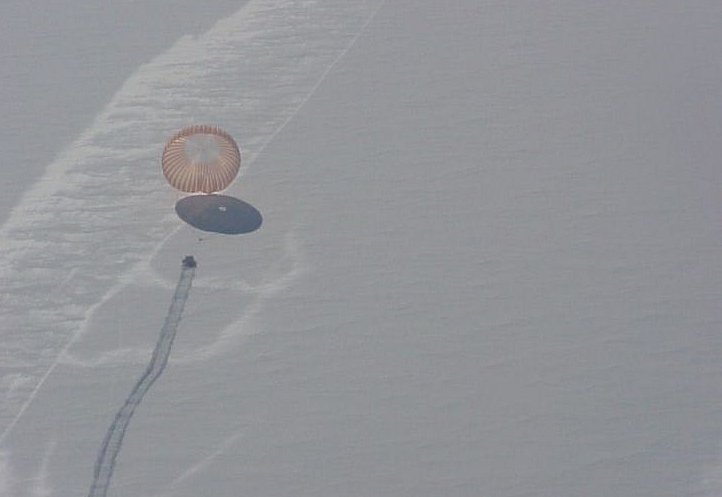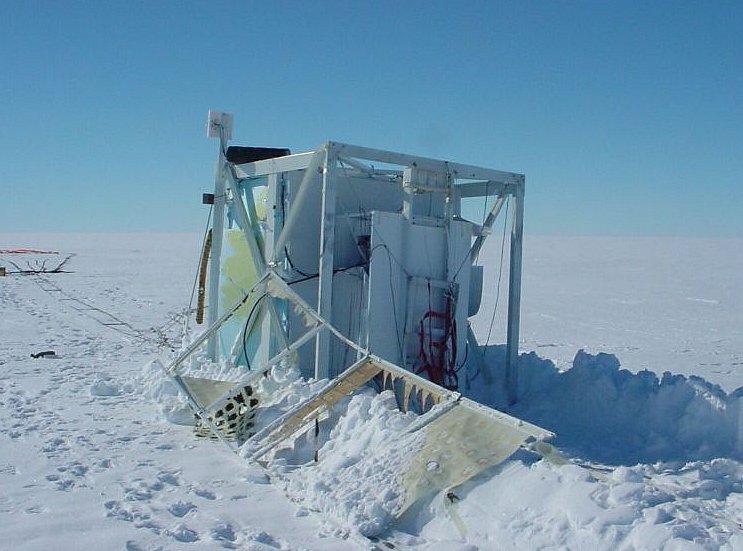Purpose of the flight and payload description
The Trans-Iron Galactic Element Recorder (TIGER) is a balloon borne instrument designed to measure the elemental abundances of Galactic Cosmic Rays (GCRs) wich are energetic atomic nuclei that originate from outside our solar system and are believed to be accelerated by exploding stars (supernova) to extremely high energies.
GCRs are of particular interest to the astrophysics community since they are one of only two types of matter that can be directly sampled from outside the solar system. They serve as a probe of the galactic cosmic ray source and the interstellar medium within our galaxy.
The TIGER experiment measures GCRs with atomic number between 26 (Iron) and 40 (Zirconium). These elements are very rare in galactic cosmic rays and are difficult to measure, requiring large detectors with long duration of exposure and excellent resolution.
The instrument comprises two hodoscopes located on top and bottom of the instrument, two Cerenkov detectors in the core and beetween this two components a pair of scintillator detectors.
The hodoscope detectors are responsible for determining the trajectory of a particle that passes through the instrument. Each hodoscope layer is composed of two planes of scintillating optical fibers, with about 1200 square fibers with 1 mm2 cross-section each. At both ends, these fibers are joined to 14 photomultiplier tubes (PMTs). As a nucleus enters one plane in the hodoscope, it will cause one or two fibers to scintillate as it enters and the light emitted is piped down the fibers to the two PMTs located at each end. A precise location of entry is given by reading out the signal in these PMTs. This information is needed to trace the angle that the particle had upon entry.
The scintillator detectors are responsible for determining the charge of a particle that passes through the instrument. They are made of a special kind of plastic called poly-vinyl toluene so when a charged particle passes through it, it excites and ionizes the molecules in the plastic. In TIGER, there are four scintillating detectors, S1, S2, S3, and S4 for redundancy purposes. The S1 and S2 scintillators are the most important for deriving the charge of a particle. If the signal in the required detectors is high enough, the software decides that a particle has indeed passed through the detector, and proceeds to read out the light output.
The Cherenkov detectors in TIGER are responsible for determining the kinetic energy that of a particle entering the detector. These detectors use an effect known as the Cherenkov effect that was put to use in High-Energy Astrophysics within the last 40 years. Since this effect is quite dependent on the charge of the incoming particle, two different nuclei entering TIGER with the same energy will emit different amounts of light into the Cherenkov boxes. In the TIGER instrument, there are two Cherenkov detectors. C1 is made with acrylic and C0 is equipped with aerogel, which incidentally holds the record for the least dense solid substance on earth. As a particle enters the light box, it precipitates the emission of Cherenkov radiation, which is detected by the 5-inch photomultiplier tubes (PMTs) located along the circumference of the ~1 m2 light box.
Details of the balloon flight
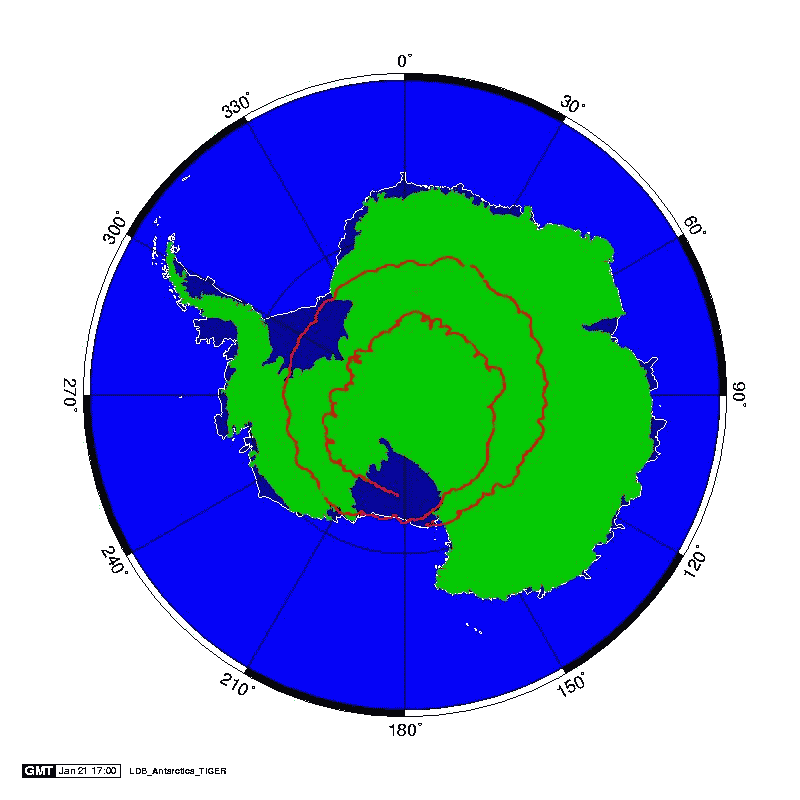
Balloon launched on: 12/20/2001 at 12:30 local
Launch site: Williams Field, McMurdo Station, Antarctica
Balloon launched by: National Scientific Balloon Facility (NSBF)
Balloon manufacturer/size/composition: Zero Pressure Balloon Raven 28L - 800.000 m3 - SF3-29.47-.8/.8/.8-NA
Balloon serial number: W29.47-2X-54
Flight identification number: 504N
End of flight (L for landing time, W for last contact, otherwise termination time): 1/21/2001 at 8:03 utc
Balloon flight duration (F: time at float only, otherwise total flight time in d:days / h:hours or m:minutes - ): 31 d 24.5 h
Landing site: 250 miles SSE of McMurdo station, Antarctica
Payload weight: 2325 lbs
Overall weight: 3566 lbs
The balloon was launched on December 21, 2001 at 12:30 AM, using dynamic method assisted by launch vehicle. After a nominal ascent phase the balloon reached float altitude of near 120.000 feet and started to circumnavigate the continent in a anti-clockwise path.
This was the first long duration balloon intended to attempt two circuits around the south pole with a flight time of 20 - 30 days.
The first orbit of the continent lasted a total of 13 days and 21.4 hours while the second orbit lasted 17 days and 23.1 hours.
After two full circles to rhe Antarctic Plateau the TIGER payload landed at about 21:00 on Jan 21, 2002, 31 days 21.5 hours after launch setting a endurance record for a long-duration balloon flight that lasted until 2004.
After hitting ground the payload was dragged by the wind for 65 miles over the Ross Ice Shelf before coming to a stop on its own. The cause of the failure was the battery that powered the mechanism to disconnect the payload from its parachute discharged in the so long flight.
This was the first scientific flight of the instrument. It endured near 32 day setting a record for the longest successful scientific balloon flight.
Around 100 particles with atomic number 31 and 32 were collected and some limited statistics were obtained for particles with atomic number greater than 32.
External references
- TIGER website Goddard Space Flight Center, NASA
- Balloon bursts flight record Article on TIGER's record flight from the Antarctic Sun magazine
- Cosmic-ray origin in OB associations and preferential acceleration of refractory elements: Evidence from abundances of elements 26Fe through 34Se The Astrophysical Journal, 697:2083-2088, 2099 June 1
- Flying TIGER: Scientific balloon ride Article on TIGER from the Antarctic Sun magazine
- Measurements of the Ultra-Heavy Galactic Cosmic-Ray Abundances between Z=30 and Z=40 with the TIGER Instrument 28th International Cosmic Ray Conference. July 31-August 7, 2003. Trukuba, Japan
- NASA Balloon Makes Record Breaking Flight Inside Wallops - Volume XX-02 - Number: 02 January 22, 2002
- Observations of the Ultra-Heavy Galactic Cosmic-Ray Abundances with TIGER 29th International Cosmic Ray Conference 2005, Pune, India
- Possible Detection of Large Solar Particle Event at Balloon Altitudes during the 2001-2002 TIGER flight 28th International Cosmic Ray Conference. July 31-August 7, 2003. Trukuba, Japan
- TIGER to collect galactic cosmic ray data over Antarctica WUSL's Record
1535If you consider this website interesting or useful, you can help me to keep it up and running with a small donation to cover the operational costs. Just the equivalent of the price of a cup of coffee helps a lot.

